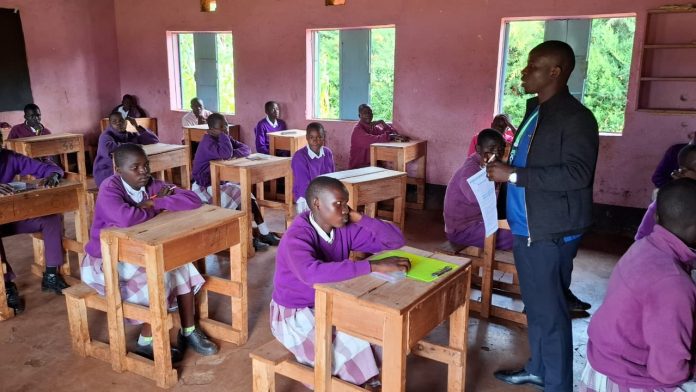The inaugural Kenya Junior School Education Assessment (KJSEA) national examinations kicked off on Monday, October 27, 2025. This was also the day in which the Kenya Primary School Education Assessment exams started.
The two exams saw an estimated 2.4 million students across the country sit for the KPSEA and KJSEA examinations. Out of these, 1,130,669 students will sit the for the KJSEA, 1,298,089 will sit for the KPSEA exams. Another 996,078 will sit for the Kenya Certificate of Secondary Education examinations.
Grade 9 learners sitting the KJSEA exams will be looking to move to senior school in January 2026 as the first class under the Curriculum Based Education to make the transition.
However, unlike the previous 8-4-4 system in which students were awarded certificates after completing their Kenya Certificate of Primary Education (KCPE) exams, Grade 9 students will not be awarded with certificates for their KJSEA exams.
According to the Cabinet Secretary in charge of education Julius Ogamba, the students will be given result slips which will show the grades they scored in their respective subjects.
“The new system represents a fundamental shift from the old Kenyan certificate of primary education model, emphasizing skills, creativity, and continuous learning rather than one-off-high stakes testing,” said CS Ogamba.
“KJSEA exams are not about ranking or elimination; they are about understanding what a learner can do with the knowledge they have acquired. It values skills, innovation, and real-world problem-solving.”
The subjects that will be assessed under the KJSEA include Mathematics, English, Kiswahili, Integrated Science, Social Studies, Religious Education, Agriculture, Pre-Technical Studies, Creative Arts, and Physical Education.
The students sitting for the junior school examinations selected their preferred choice of senior schools according to their pathways of interest in a process that took place from June 9 to July 15, 2025.
In that process, there were 9,750 schools that were listed for selection. About 5,000 of them did not receive even a single selection from the students.
The pathways that were up for selection included social sciences, arts and sports, and science, technology, engineering and mathematics (STEM). Mathematics, English, Kiswahili remained compulsory just as they were in the old 8-4-4 curriculum. However, the ministry added community service into the docket of compulsory subjects.
For each subject combination selected, four schools were to be chosen in four clusters for a total of 12 schools; four for their first choice, four for their second, four for their third, and four for their fourth.
Once admitted to senior schools, learners will take seven subjects, four of which are compulsory.
READ MORE: Students to no longer collect KCPE, KCSE certificates from their schools








